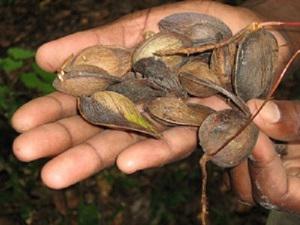Revocatus Mushumbusi Petro
The proposed project aims at conserving the Oxystigma msoo species which is listed as vulnerable by IUCN and threatened to extinction in CITES using local communities around Rau Forest Reserve, Tanzania.

Rau forest is found in Kilimanjaro region in Tanzania. It is located at 3023' S and 37022' E which is 3 km South East of Moshi town. The reserve is on the gentle south facing alluvial base of Mountain Kilimanjaro, at an altitude of between 730 and 765 m. It is surrounded by two villages which are Njoro and Kaloleni. The forest reserve is famous for two tree species, Oxystigma msoo and Lovoa swynnertonii which are rare elsewhere. Both are very tall evergreen trees with valuable timber. Together with tall (Milicia excelsa) Mvule trees, they represent an important seed source.

In particular, Rau forest is considered essential to the survival of O. msoo because the species is said to occour only in habitats with ground water or riverine forests of 800 m or below. These areas are very limited in East Africa. Within Southern, Eastern and Central Africa, O.msoo has been reported to be found in Tana River and in limestone forest patches near Mombasa in Kenya and in Tanga and Kilimanjaro (Rau forest) regions in Tanzania. Despite its presence in other three localities, O. msoo still must be considered vulnerable as Tana forest is threatened by water regime change and firewood felling following upstream river impoundment and limestone forest patches in Mombasa are all encroached. Due to high population pressure, the Rau forest reserve is also being reduced in size by cultivation and encroachment. Much of this forest is no longer in its natural condition as timber is removed to supply poles and firewood to the adjoining Moshi townships. Polhill (1968) cited by Rodgers (1983) reported that O.msoo was considered to be endangered and in need of urgent conservation action.
In 1998, IUCN was decreed the species to be among the red list of threatened species which means that the species may become extinct if measures aren't taken to protect it. Therefore all of these call upon for the need of community based conservation of the remaining species in Rau forest before its extinction.